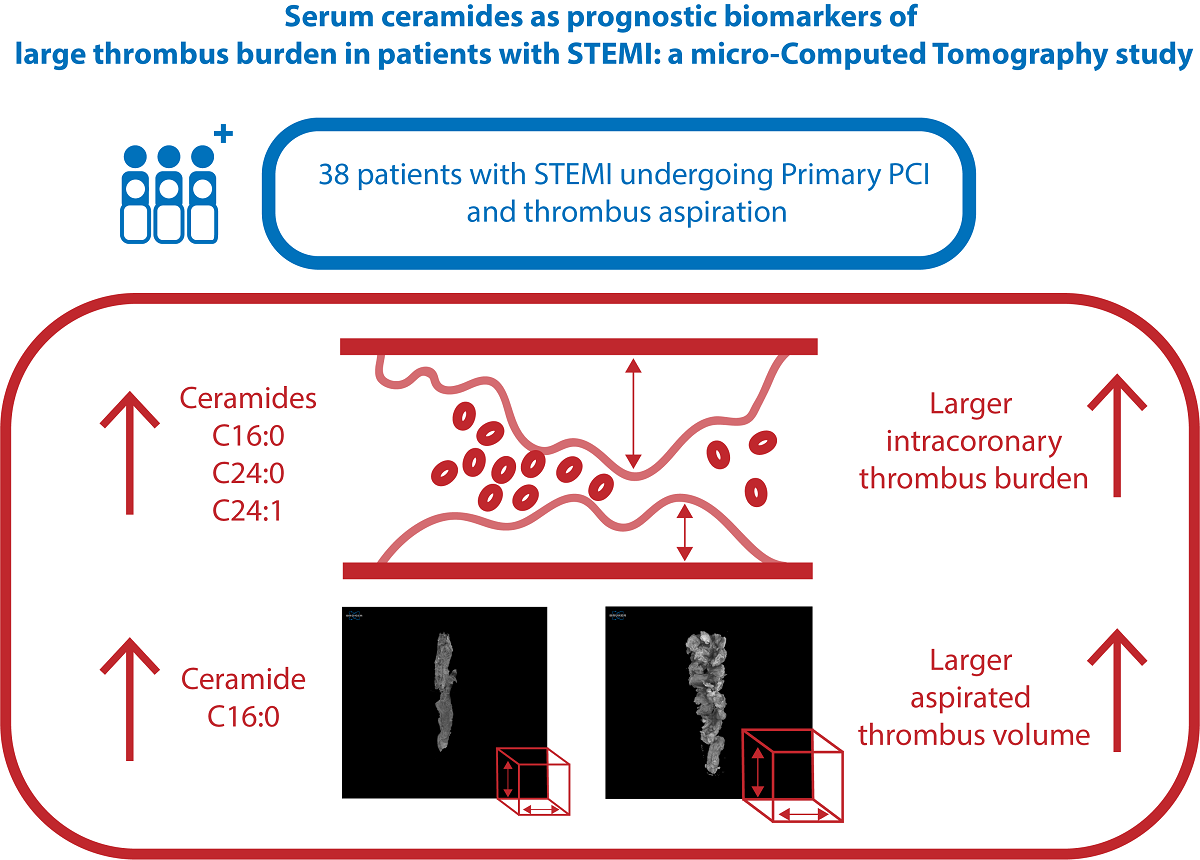ST-elevation myocardial infarction (STEMI) remains one of the leading causes of morbidity and mortality worldwide. The identification of novel metabolic and imaging biomarkers could unveil key pathophysiological mechanisms at the molecular level and promote personalized care in patients with acute coronary syndromes. We studied 38 patients with STEMI who underwent primary percutaneous coronary intervention and thrombus aspiration. We sought to correlate serum ceramide levels with micro-CT quantified aspirated thrombus volume and relevant angiographic outcomes, including modified TIMI thrombus grade and pre- or post-procedural TIMI flow. Higher ceramide C16:0 levels were significantly, but weakly correlated with larger aspirated thrombus volume (Spearman r=0.326, p=0.046), larger intracoronary thrombus burden (Nagelkerke R2=0.236, p=0.030) and worse pre- and post-procedural TIMI flow (Nagelkerke R2=0.210; p=0.049 and Nagelkerke R2=0.277; p=0.039, respectively). Ceramides C24:0 and C24:1 were also significantly associated with larger intracoronary thrombus burden (Nagelkerke R2=0.311; p=0.008 and Nagelkerke R2=0.423; p=0.001, respectively). In conclusion, serum ceramide levels (mainly C16:0 and C24:1) were higher among patients with larger intracoronary and aspirated thrombus burden. This suggests that quantification of serum ceramides might improve risk-stratification of patients with STEMI and facilitate a more individualized approach in everyday clinical practice.

